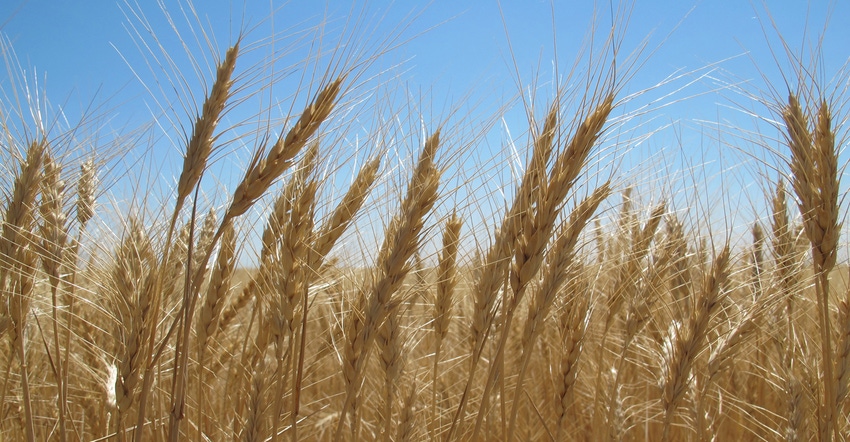August 14, 2018

By Dave Ostdiek
Protein levels are a major factor in wheat production, and Nebraska wheat crop yield data from 2016 and 2017 shows low protein levels across the state. Wheat protein levels are affected by a combination of factors, including yield and nitrogen applied. But just how much do soil nitrogen levels affect protein levels in winter wheat grain? A multidisciplinary team of University of Nebraska-Lincoln researchers is conducting a two-year study to find out.
The team plans to evaluate how grain quality, yield and field stands are affected by nitrogen fertilizer rates and application timing. The trials will be conducted across the state, at Scottsbluff, Sidney, Grant and Mead, to reflect variations in precipitation. The project also will test the effectiveness of crop sensors in monitoring wheat crop conditions and whether inputs are needed during the growing season.
Wheat growers receive lower prices when wheat has lower protein levels. According to the project proposal, low protein levels cost Nebraska producers between $2.3 million and $9.6 million dollars in 2016 alone, despite high yields, based on reports from elevator personnel and Wheat Board members.
Among many factors, soil nitrogen is likely the most important one that affects wheat protein, says Bijesh Maharjan, soil and nutrient management specialist at the UNL Panhandle Research and Extension Center and lead principal investigator on the project. However, with low grain prices, farmers are under pressure to cut input costs, including nitrogen fertilizer.
“Reducing or eliminating nitrogen applications to winter wheat will typically result in low protein when yields are high and/or residual soil nitrogen is low," Maharjan says.
Meanwhile, abundant fall and spring precipitation during 2016 and 2017 increased tillering and grain yields, but may have moved soil nitrogen deeper into the soil profile, where roots can't reach it.
“In order to increase protein levels in wheat, N must be properly managed in the soil and be available for plant uptake during grain development,” according to the project proposal. “The interacting effect of N with available soil moisture becomes a contingent issue for a profitable winter wheat production.”
It takes an extensive data set to predict how much nitrogen a wheat crop needs, and UNL’s formula for predicting wheat nitrogen requirement, developed in the 1970s, is due for an update based on changes in wheat variety traits, management and changing climatic conditions.
At the same time, crop-sensing technology has been used successfully in predicting nitrogen requirements in corn. Research established a strong relationship between total chlorophyll content in a corn canopy and the crop’s nitrogen status. This project will explore whether crop sensing technology can potentially benefit wheat management.
The research project will also look at other nutrients, specifically links between nitrogen and sulfur rates. Sulfur deficiency can adversely affect wheat.
Maharjan says the researchers hope the two-year project will not only answer questions about how factors like fertilizer timing and precipitation affect grain protein levels, but also whether crop sensing can be used as a management tool for fertilizer management in wheat.
“Provided all goes well and we get good data, in two years we will understand a lot about management for optimum yield and protein,” Maharjin says.
Maharjan is joined by co-investigators Cody Creech, dryland cropping systems specialist; Dipak Santra, alternative crops breeding specialist; Stephen Baenziger, wheat breeding specialist; Teshome Regassa, research assistant professor; Devin Rose, associate professor in food science and technology in the UNL Food Innovation Center; Yeyin Shi, assistant professor in biological systems engineering and agricultural information systems specialist; and Nathan Mueller, Extension educator.
The project is funded by grants from the Nebraska Wheat Board (for the coming year) and the University of Nebraska Agricultural Research Division (ARD) Innovation Fund for Wheat/Cereal Crops (for the next two years).
The grants will provide funding for a graduate student dedicated to the protein project. The student will start in the spring. The plots will be planted in September this year.
Ostdiek is a communications associate at the Panhandle Research and Extension Center. This report comes from Panhandle Perspectives, a regular column from the Panhandle Research and Extension Center.
You May Also Like




